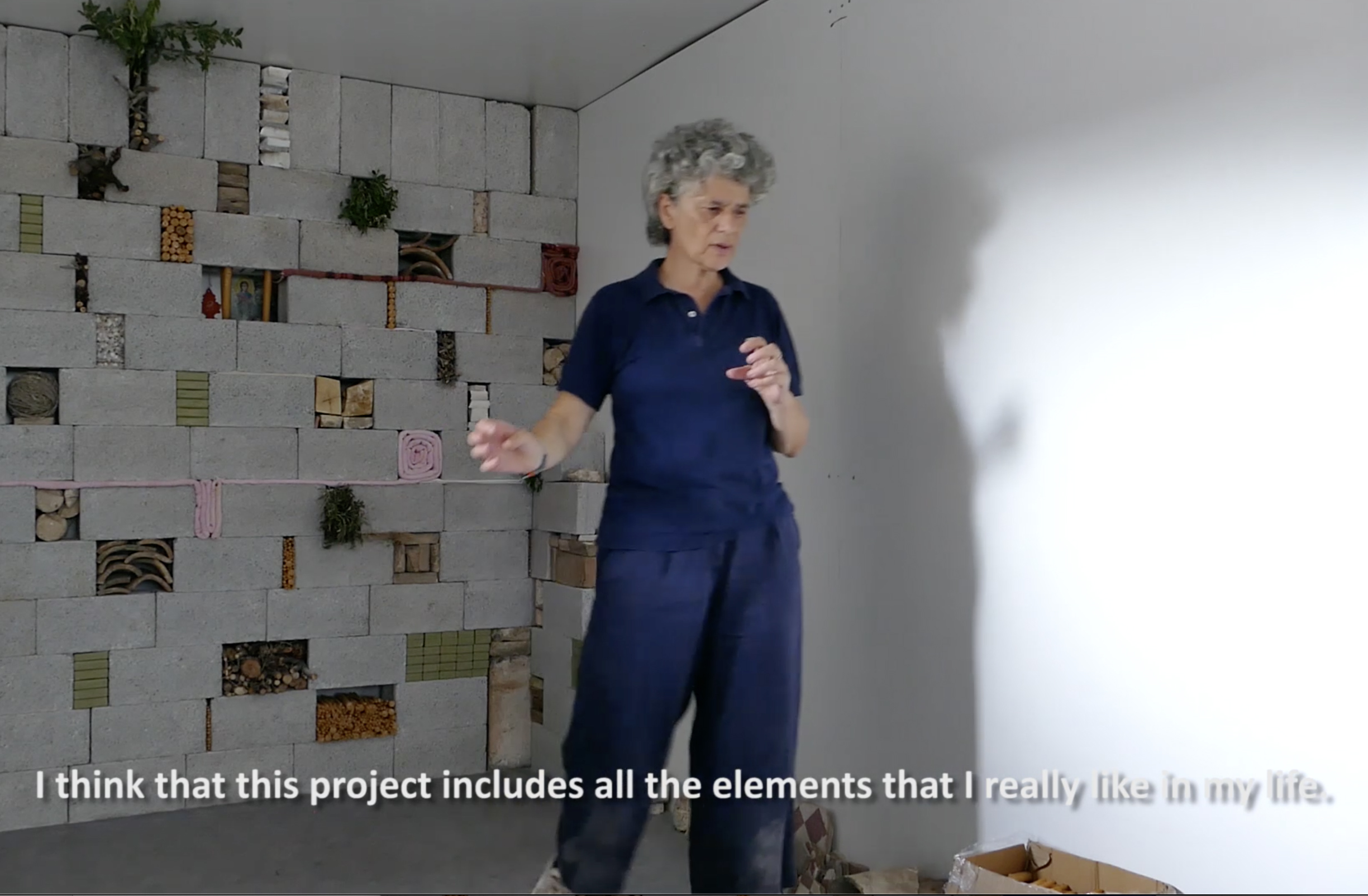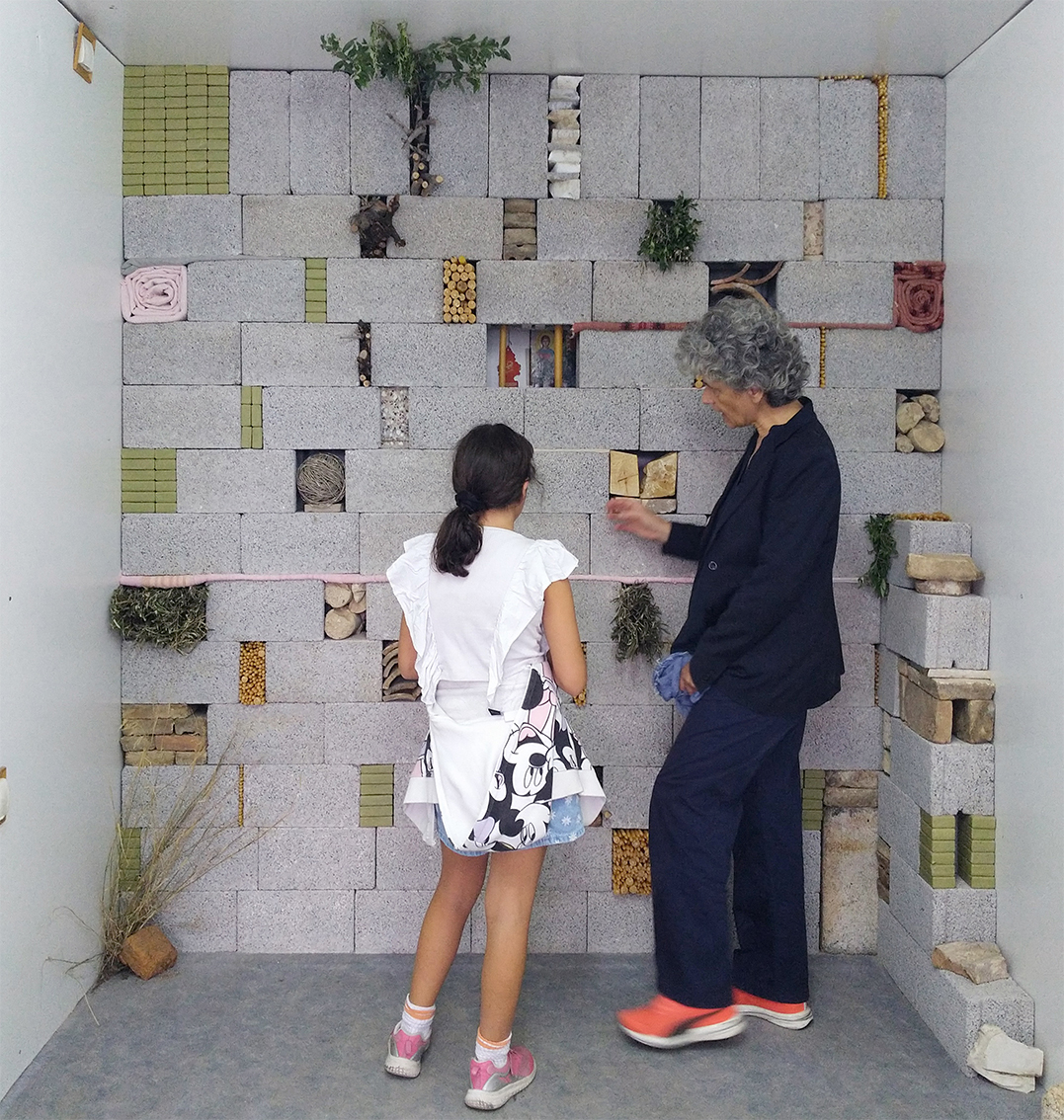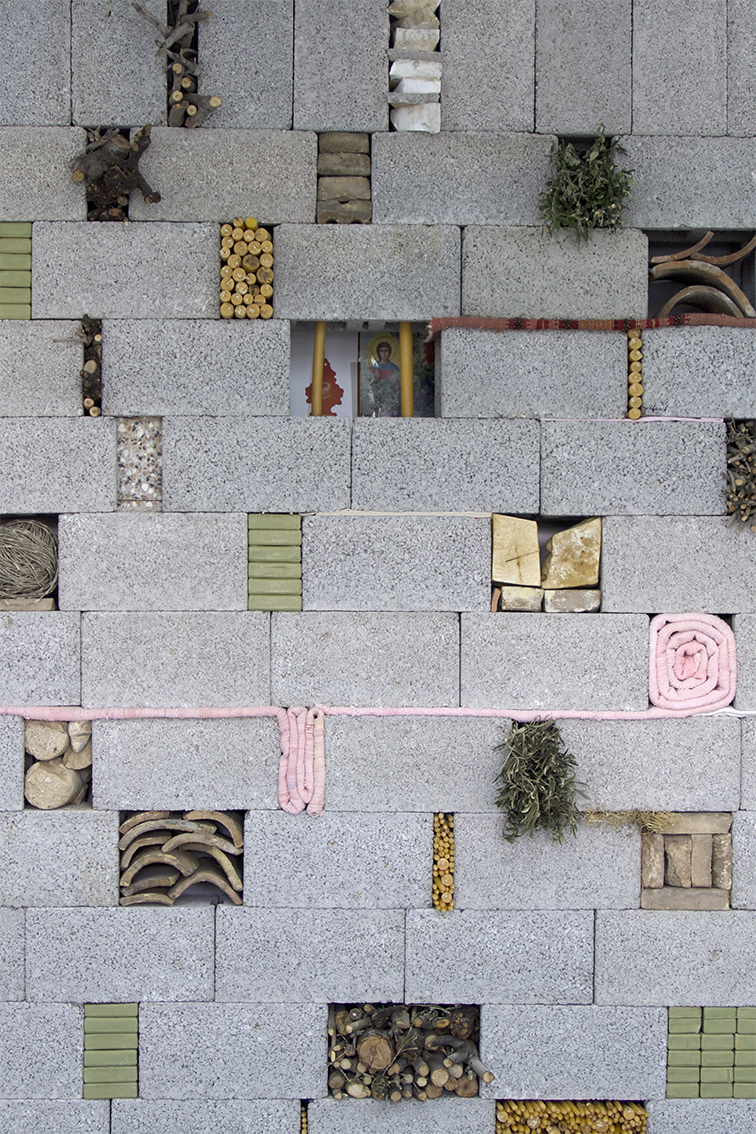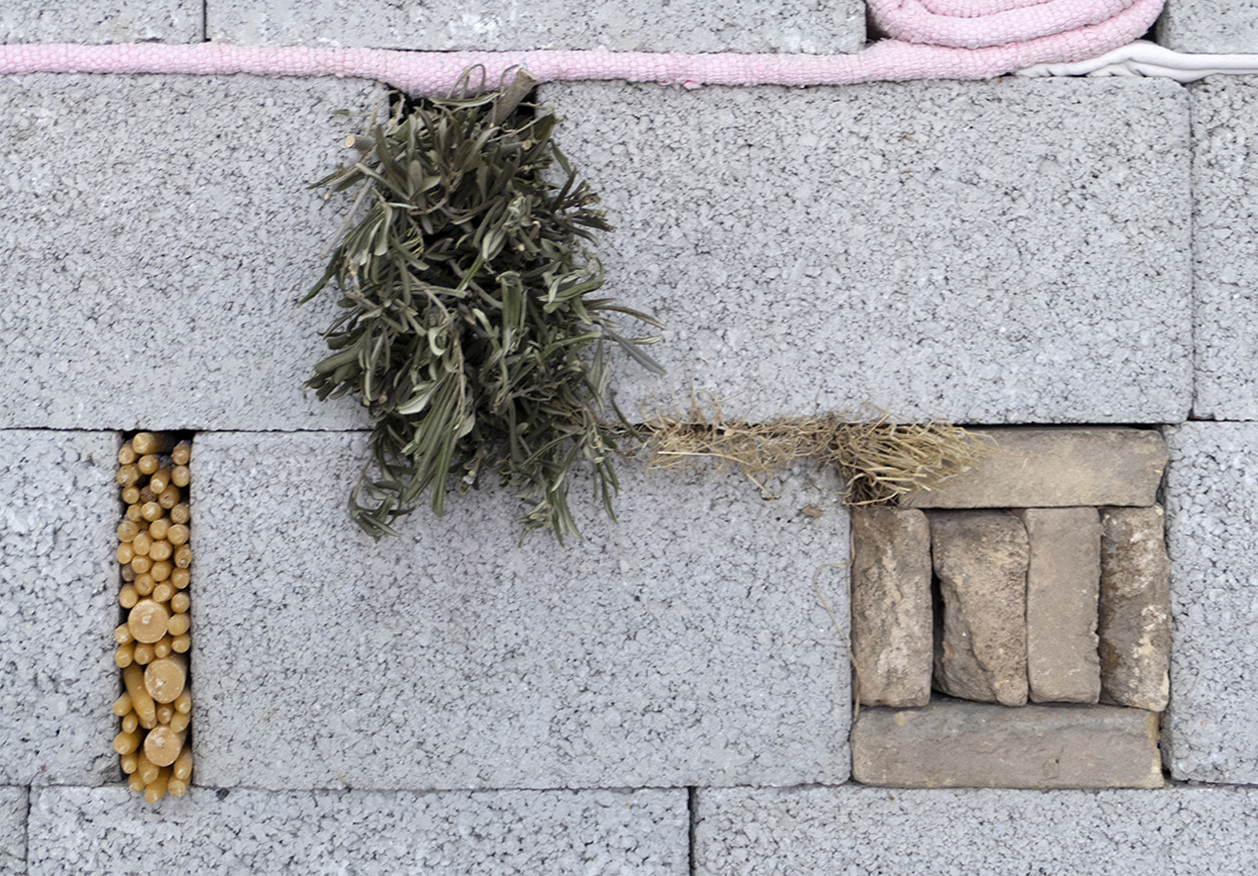Stacking Stories . 2023
In-situ installationconcrete blocks, olive branches, tiles, pieces of marble, ceramic bricks, pieces of mosaic, handmade textiles, homemade soap, used church candles, candle scent, green soap bars, soap scent
230 x 230 x 17 cm
The installation explores the multi-layered history of the ELeonas region in Athens from antiquity to the present day and has been part of the group show Eleonas ’23 – Chthonic and Anthropocene curated by Dimitris Trikas
Stacking Stories - the video . 2024 | 10 min | Englisch subtitels | interview / camera: Angeliki Douveri | editing : Marios Koutsourelis
A short documentary about the making process and some reflections on my installation, developed in situ, over 5 days of improvising.


 The initial idea for this work was born from the photographic material by Mania Benisi, which accompanied the invitation to participate in the exhibition. A cross-sectional photograph of an archaeological excavation revealing the levels of different periods of life stacked by time, created associations with the 'yukos' that women in many parts of Greece used to make by stacking their dowry of woven textiles. My piece Alteration in 2021 was based on this female practice.
The initial idea for this work was born from the photographic material by Mania Benisi, which accompanied the invitation to participate in the exhibition. A cross-sectional photograph of an archaeological excavation revealing the levels of different periods of life stacked by time, created associations with the 'yukos' that women in many parts of Greece used to make by stacking their dowry of woven textiles. My piece Alteration in 2021 was based on this female practice.
 This I tried to do, symbolically, by creating the Stacking Stories installation on the spot inside the container I was provided; starting with the appropriation of the space through a ritual process of manual cleaning with water and traditional green soap that filled the space with its characteristic aroma.
This I tried to do, symbolically, by creating the Stacking Stories installation on the spot inside the container I was provided; starting with the appropriation of the space through a ritual process of manual cleaning with water and traditional green soap that filled the space with its characteristic aroma.The project was developed in situ, over 5 days of improvising and letting the original idea adapt to the specific space. The result is reminiscent of the ‘xerolithies’, rather masculine constructions, found in many parts of Greece. A plot full of stones would become a cultivated field as the stones were slowly stacked on drystone walls that leveled the field and protected the soil from winter rains.
Here the concrete blocks, products of the area and symbols of building development, are combined with used church candles, which already have a wish in them and the scent of the beeswax that made them, with pieces of marble, old ceramic bricks, tiles, pieces of mosaic, tiles, olive branches, hand-woven textiles, homemade soap, and green soap bars. This is how the 'manly' and 'womanly' stacks were united into one.
 My sincere thanks to Angeliki Douveri and Wim Oudshoorn for their collaborative spirit.
My sincere thanks to Angeliki Douveri and Wim Oudshoorn for their collaborative spirit.With the kind support of Papoutsanis S.V.E. and the Cathedral of the Dormition of the Virgin Mary of Faneromeni, Cholargos.








